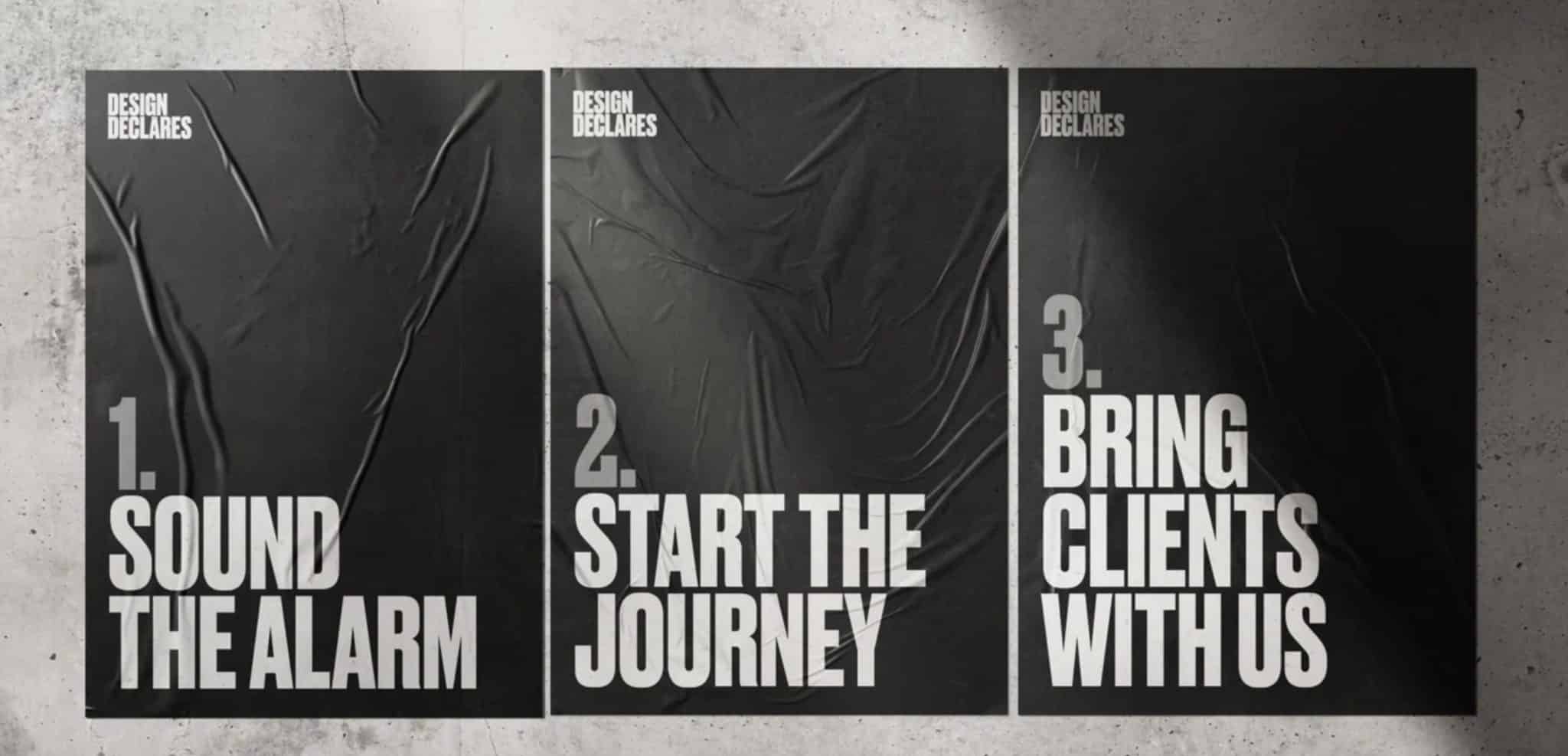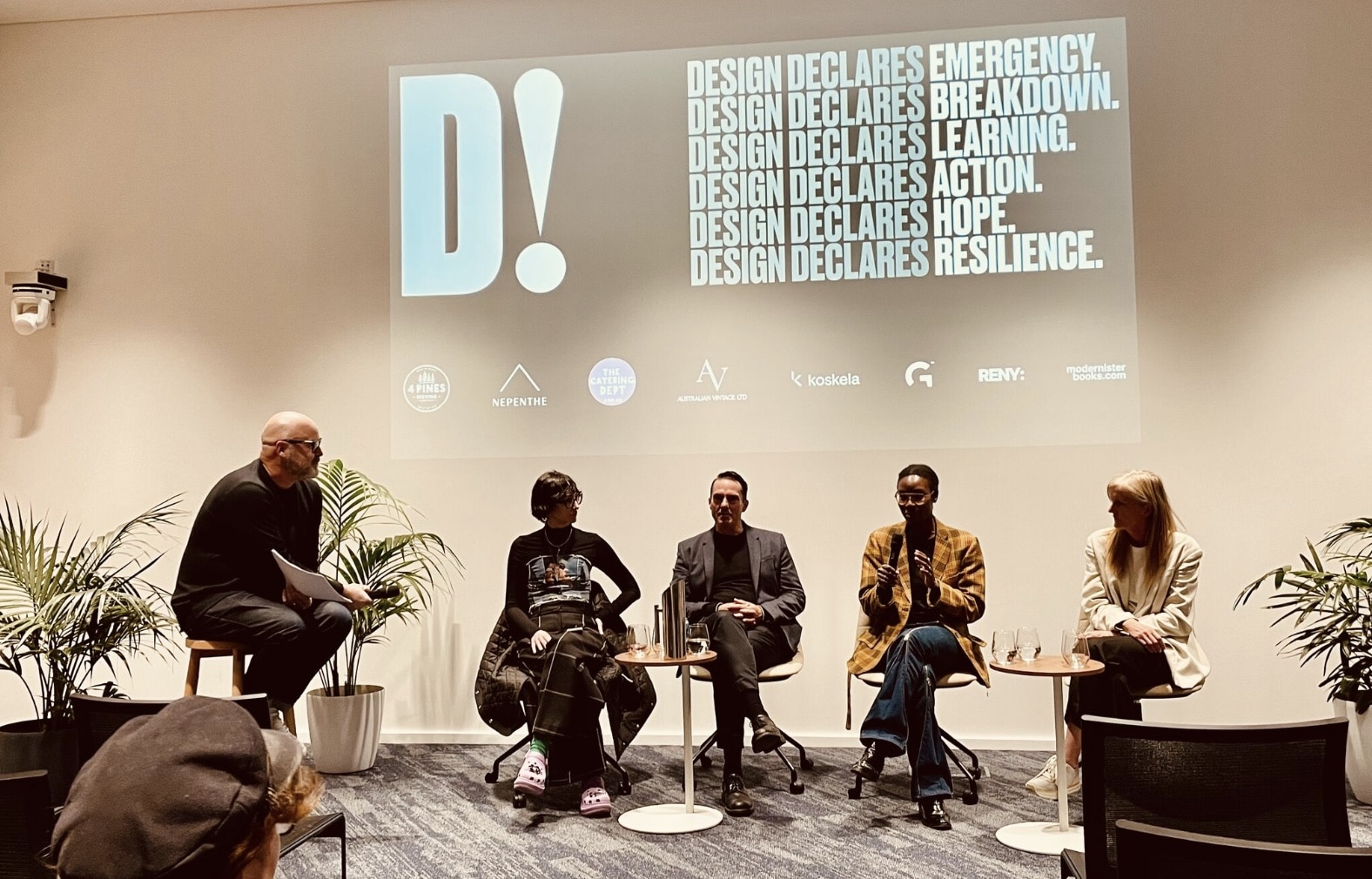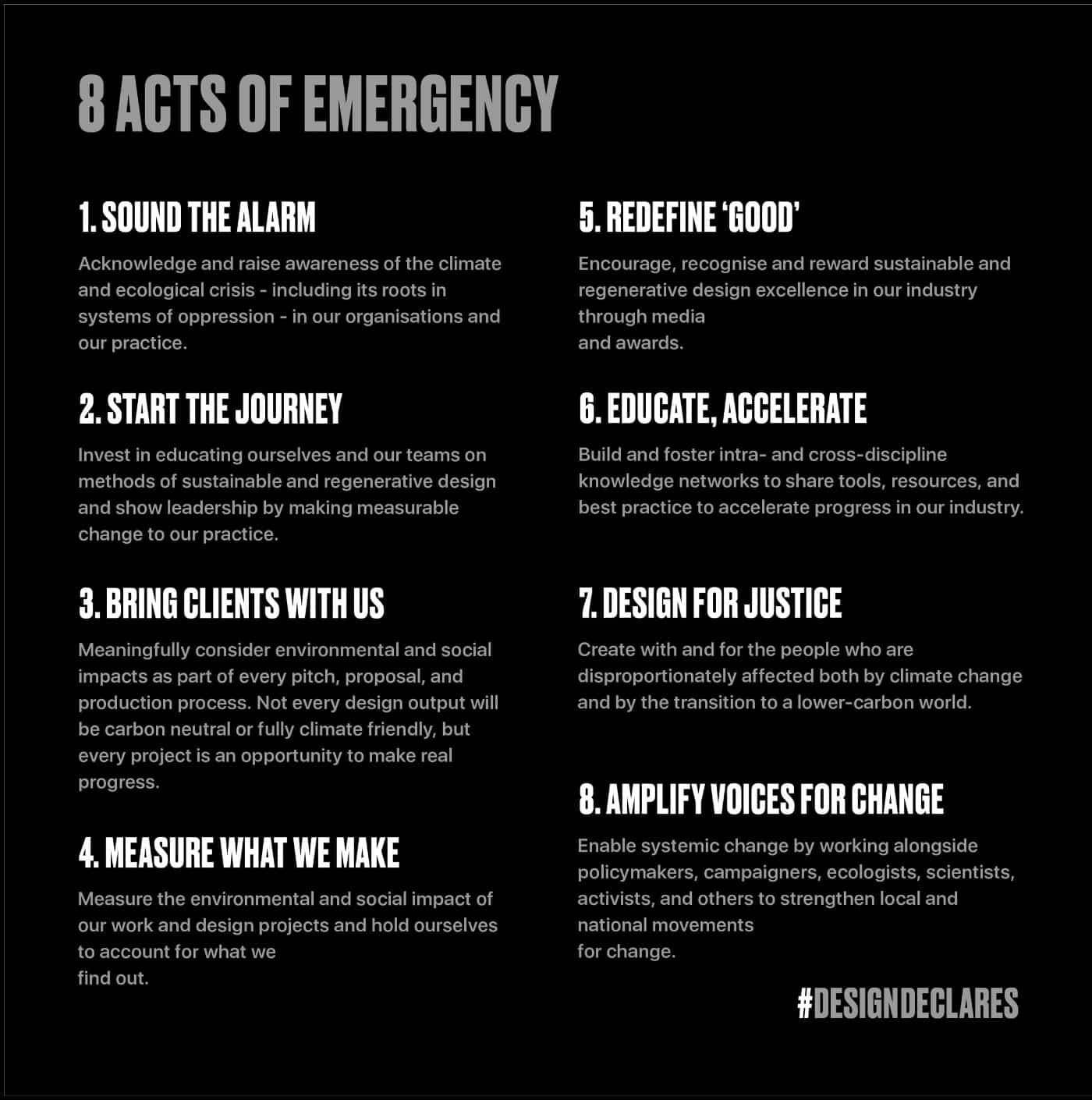 Design Declares is a pivotal movement mobilising the design industry to tackle the climate crisis.
Design Declares is a pivotal movement mobilising the design industry to tackle the climate crisis.
The ADA has joined this movement to underscore our unwavering commitment to sustainability, innovation, and impactful design initiatives.
Design Declares is a growing group of designers, design studios, agencies, brands, and institutions united to declare a climate and ecological emergency. As part of the global declaration movement, the group commit to harnessing our industry’s tools to reimagine, rebuild, and heal our world.
The organisation provides resources, guidance, and a supportive network to integrate sustainable practices, encouraging transparency and accountability.
Design Declares Australia
The official launch of Design Declares Australia at the Greenhouse Climate Tech Hub marked a significant milestone in Australia’s journey towards sustainable Design. The event demonstrated the collective resolve of industry professionals to revolutionise the design sector and confront the urgent climate crisis head-on.
Greenhouse Climate Tech Hub, known for its commitment to climate innovation, complemented the principles of Design Declares Australia with its sustainable architecture and dedication to environmental consciousness.
 The launch event featured an impressive lineup of speakers and panellists, each bringing unique insights to the table:
The launch event featured an impressive lineup of speakers and panellists, each bringing unique insights to the table:
Ben Rennie, Design Declares Australia Chair and founder of Reny®Studio, set the tone with a powerful opening address.
Jane Duru: Representing R/GA, a New York-based advertising agency, Jane offered valuable perspectives on designing for citizens rather than just consumers.
Sasha Titchkosky: From Koskela, she shared strategies for effectively communicating the urgency of the climate crisis, using her furniture brand as a case study. These strategies are underpinned by their goals of being fully circular by 2027.
Kirby Clark: Kirby presented eye-opening statistics about the impact of design decisions on product sustainability.
Cameron Tonkinwise from the University of Technology Sydney gave a powerful talk on what Design can do.
Design from the outset is responsible for the carbon footprint
80% of a product’s carbon footprint is determined at the design stage. To reduce carbon, we must “close the loop” by embedding circular thinking at this initial design stage. Sustainability needs to be embedded in the design process—not a peripheral add-on! How do we rethink BAU practices to make sustainability and circularity the centre of our work?
80% of a product’s carbon footprint is determined at the design stage.

…By (cue discomfort) “unlearning” many standard business practices based on the colonial, capitalist and linear economy approach. We can do this by co-creating with the people for whom we are designing and with respect and sensitivity to the land on which we work.
85% of commercial furniture will end up in landfills. A service-based business model rather than ownership-based is one of the most sustainable ways to tackle this ever-growing waste problem. A fundamental rethink of how we do business to transition to subscription rather than ownership-based models for the goods we (currently) buy is imperative.
Sydney landfills are expected to expire within five years; as Sydney’s population edges towards 5.8 million by 2030, we are producing waste at a rate six times our population growth. NSW is the second-highest per-capita producer of waste in the world.
The Internet and Global Emissions
A stark reality is that the internet is responsible for 4% of global emissions, which continues to grow with the expansion of digital technologies. This awareness drives efforts to minimise carbon footprints through thoughtful, sustainable design practices.
Collaboration trumps competition; industry will move together as we have a louder collective voice!
Join Design Declares here, receive the toolkit and help spread the message.




